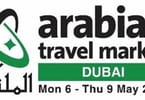Tourists taken to souvenir shops in backstreet industrial areas and told the prices are in US dollars.
Guides charging tourists hundreds of dollars to leave their tour to visit a relative or friend for a couple of hours.
Tour guides sleeping in hotel lobbies to stop members of their group being able to go out and visit the local shops to compare prices.
These are the sort of horror stories you might associate with visiting a Third World country.
But Kiwi tourism operators say they are experiences some Chinese visitors are having in New Zealand.
More than 117,000 Chinese people visited our country in the year to September 2008.
Since 2000 the numbers have grown by an average of 22 per cent a year.
This year China overtook Japan as New Zealand’s fourth-largest market by numbers. By 2014 it is predicted to nearly equal numbers coming from the United States, New Zealand’s third-largest market.
Yet the problems associated with getting Chinese people to New Zealand, ensuring they have a good time here and making it worthwhile for New Zealand tourism businesses seem abundant.
Tourism New Zealand research shows Chinese visitors have the lowest satisfaction levels of all those who visit this country.
Most combine New Zealand with a trip to Australia and spend just three days here versus the average stay of 20 days. And although the numbers of Chinese coming to New Zealand on holiday have increased rapidly, their spending has fallen.
In 2004 tourists from China spent $353 million in New Zealand but in the year to June 2008 that dropped to $261 million, significantly less than the $426 million spent by Japanese tourists.
Tourism industry experts say the drop-off is the result of fewer Chinese coming here for education purposes.
But operators say they are not seeing the financial benefits or the increased numbers because Chinese visitors are being funnelled into high- commission shopping tours and appear to be focused on price rather than experience.
Graeme West, sales and marketing manager for Discover Waitomo, a division of Tourism Holdings, says Waitomo Caves has been caught in a price war between Chinese group tour operators.
“Somebody dropped it out in order to save time and money and once one operator dropped it out the others had to follow to stay competitive.”
West went to Shanghai recently to attend Tourism New Zealand’s Asia Kiwilink trade fair and find out more about the Chinese market directly from Chinese wholesale tourism buyers.
He was told Waitomo was too expensive and too far out of the way for tours to visit.
“We knew it was happening but it was an eye-opener to talk to them directly.”
Tourism Holdings will decide in the next month whether to keep pursuing the Chinese market.
“We can’t be out there everywhere – we have to target where we think we can get the biggest bang for our buck. The market is there. But do we want the yield the market is providing?”
Rob Finlayson, central North Island sales manager for Ngai Tahu Tourism, looks after Rotorua’s Rainbow Springs, Kiwi Encounter and Hukafall Jet boating. He says it’s a familiar feeling. “All they do is the Agridome and Te Puia.”
He says even if he cut his prices in half they still would not attract Chinese visitors because “at the end of the day they only have to include two paid attractions”.
“You can only sell a seat or bed once. If it’s filled by someone paying a low yield, it’s hard to make a profit. It’s a shame, but it’s all price-driven.”
Four-star Rydges Hotel national sales manager Glenn Phipps says despite the growth in visitors from China he has not had any rate growth in four or five years. “We might have had massive growth in Chinese coming out here.
“But I assure you our revenue and growth has not grown in line with the costs of running a hotel.”
Tourism New Zealand says it is aware of the problems and is working hard to address them.
Last November it took over the monitoring of inbound tour operators that host Chinese tour groups, and in April launched its first consumer targeted advertising campaign in Shanghai to encourage more wealthy independent travellers to come to New Zealand.
Recently it also assisted around 40 New Zealand tourism businesses to travel to Shanghai, where they met up with Asian buyers who helped them get to know the Chinese market.
Tourism New Zealand general manager international operations, Tim Hunter, says there has been a number of challenges in trying to get New Zealand businesses to market themselves in China.
“Some can’t deal with a larger market, others say there is too much business risk and competition or say that their other guests won’t get along with their Asian guests.”
He says Kiwilink is designed to bring better engagement and improve relationships. “You simply can’t do all business over the internet.”
He also believes tougher rules for inbound tour operators have helped to improve the itineraries of Chinese tourists and increase the number of businesses benefiting from them.
All operators must now pass a fit and proper operator test. Tours must go to a minium of two paid-for attractions and must not spend more than 1 1/2 hours on supervised shopping a day.
Minimum accommodation requirements of at least a three-star qualmark standard hotel and transport standards are due to come in on December 1.
Operators must also declare how much they are paid by inbound tour operators in China.
Hunter says Tourism New Zealand now provides an 0800 number for visitors in Mandarin and also carries out a mystery shopping programme.
The tightening has resulted in some operators being put on probation or suspended. Two operators applied for the licence but never got to the stage of being approved.
There are now about 20 operators approved in New Zealand. But problems remain.
Hunter says one issue is authorised operators selling the use of their name to another operator who does not have authorisation, in order for visa applications to be approved.
“That has been very prevalent in New Zealand. But now we have got a system in place there is a much higher chance of picking it up.”
The other main problem is that while operators may lay out an itinerary, they do not actually follow it or stay in the hotels they have specified.
Hunter says the problems are similar to what happened when the Korean market was new to New Zealand.
“But by virtue of time Koreans have become more experienced – they just stopped shopping and left operators with a deficit in income.”
That saw operators in Australia raise their tour costs by 50 to 100 per cent last year and New Zealand operators were quick to follow suit.
Last year KTOC, the Korean Tour Operators Council of New Zealand, was investigated by the Commerce Commission for price-fixing but was given only a rap on the knuckles.
Hunter says they were not formally challenged because New Zealand consumers were not affected.
But the price hike has seen a 20 to 30 per cent drop in the number of Korean tourists coming here. “It has definitely hurt the market volume but it needed to happen,” he says.
Hunter says New Zealand is also looking to introduce its own legislation to tighten the laws concerning Chinese and New Zealand operators. That would mean the right to stop visas from being issued to Chinese companies.
“It’s quite a delicate situation but we think it is necessary because a lot of the problems stem from Chinese operators that don’t care what experience Chinese have in New Zealand.”
New Zealand is also working on improving the situation for those applying for individual independent travel visas. These started to be made available in September in Shanghai and will also be made available in Beijing next month.
Air New Zealand group general manager international airlines Ed Simms says New Zealand tourism operators need to consider China alongside other markets, in light of the tough economic conditions already affecting the industry.
“The industry is naive if they think the traditional mainstays like the UK and the US will recover immediately. If I look to China I think growth will be quicker to return.”
He says Australia is about to mount its own campaign in China in reaction to a recent drop in visitor numbers caused by the Sichuan earthquake and the Beijing Olympic Games.
“There is a real danger if we rely on Tourism New Zealand in its own right – they currently have a marketing spend equivalent to South Australia.”
Simms believes operators are being short-sighted in focusing on the present low yields.
“At the moment 63 per cent come via Australia, 27 per cent are on group tours and just 10 per cent are fully independent travellers at the high end of spending.”






















